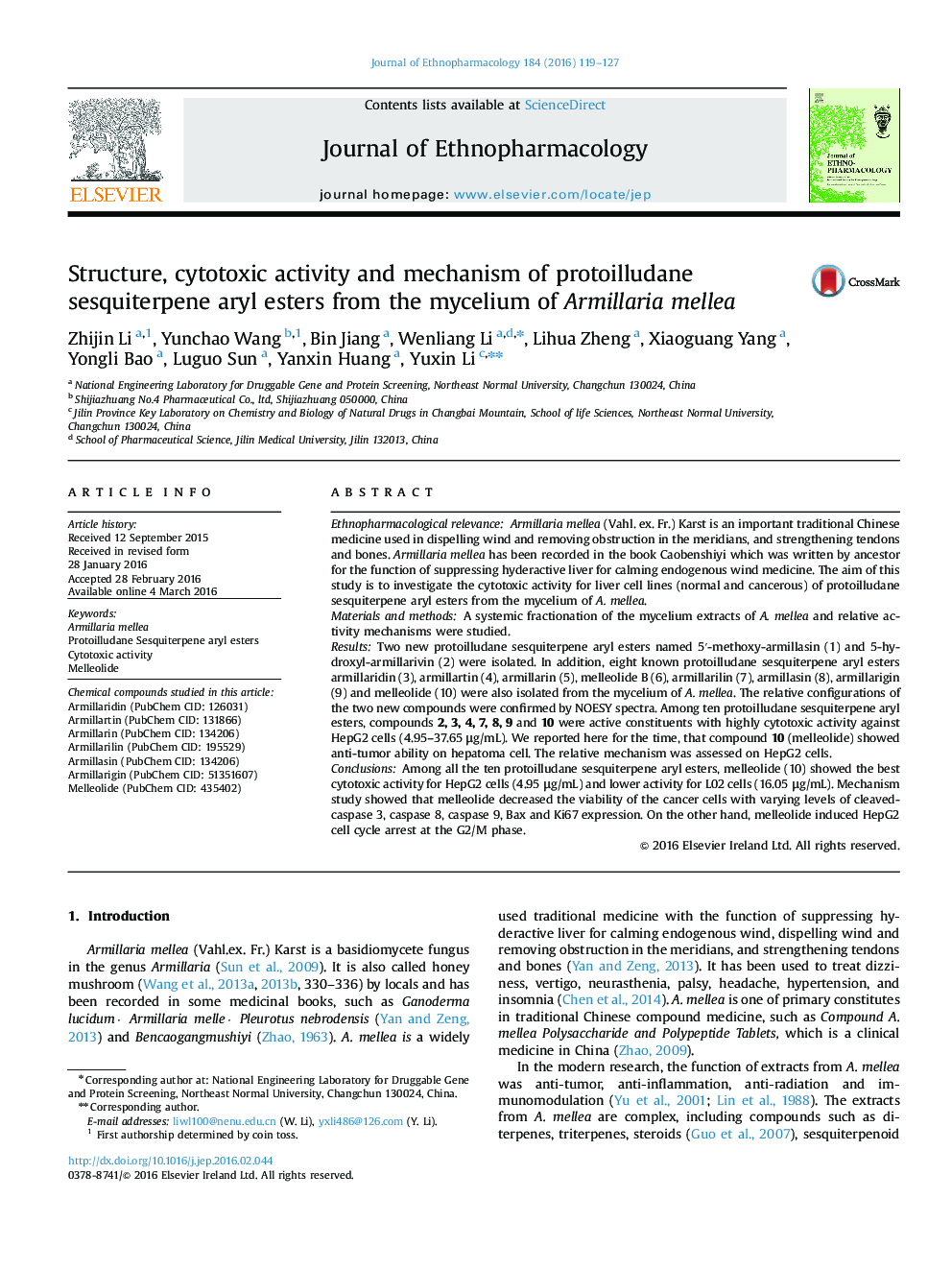| کد مقاله | کد نشریه | سال انتشار | مقاله انگلیسی | نسخه تمام متن |
|---|---|---|---|---|
| 2544782 | 1560378 | 2016 | 9 صفحه PDF | دانلود رایگان |

Ethnopharmacological relevanceArmillaria mellea (Vahl. ex. Fr.) Karst is an important traditional Chinese medicine used in dispelling wind and removing obstruction in the meridians, and strengthening tendons and bones. Armillaria mellea has been recorded in the book Caobenshiyi which was written by ancestor for the function of suppressing hyderactive liver for calming endogenous wind medicine. The aim of this study is to investigate the cytotoxic activity for liver cell lines (normal and cancerous) of protoilludane sesquiterpene aryl esters from the mycelium of A. mellea.Materials and methodsA systemic fractionation of the mycelium extracts of A. mellea and relative activity mechanisms were studied.ResultsTwo new protoilludane sesquiterpene aryl esters named 5′-methoxy-armillasin (1) and 5-hydroxyl-armillarivin (2) were isolated. In addition, eight known protoilludane sesquiterpene aryl esters armillaridin (3), armillartin (4), armillarin (5), melleolide B (6), armillarilin (7), armillasin (8), armillarigin (9) and melleolide (10) were also isolated from the mycelium of A. mellea. The relative configurations of the two new compounds were confirmed by NOESY spectra. Among ten protoilludane sesquiterpene aryl esters, compounds 2, 3, 4, 7, 8, 9 and 10 were active constituents with highly cytotoxic activity against HepG2 cells (4.95–37.65 μg/mL). We reported here for the time, that compound 10 (melleolide) showed anti-tumor ability on hepatoma cell. The relative mechanism was assessed on HepG2 cells.ConclusionsAmong all the ten protoilludane sesquiterpene aryl esters, melleolide (10) showed the best cytotoxic activity for HepG2 cells (4.95 μg/mL) and lower activity for L02 cells (16.05 μg/mL). Mechanism study showed that melleolide decreased the viability of the cancer cells with varying levels of cleaved-caspase 3, caspase 8, caspase 9, Bax and Ki67 expression. On the other hand, melleolide induced HepG2 cell cycle arrest at the G2/M phase.
Two new (1–2) and eight known (3–10) protoilludane sesquiterpene aryl esters were separated from the mycelium of Armillaria mellea. Their high cytotoxic activity and the relative mechanism were covered.Figure optionsDownload high-quality image (221 K)Download as PowerPoint slide
Journal: Journal of Ethnopharmacology - Volume 184, 26 May 2016, Pages 119–127